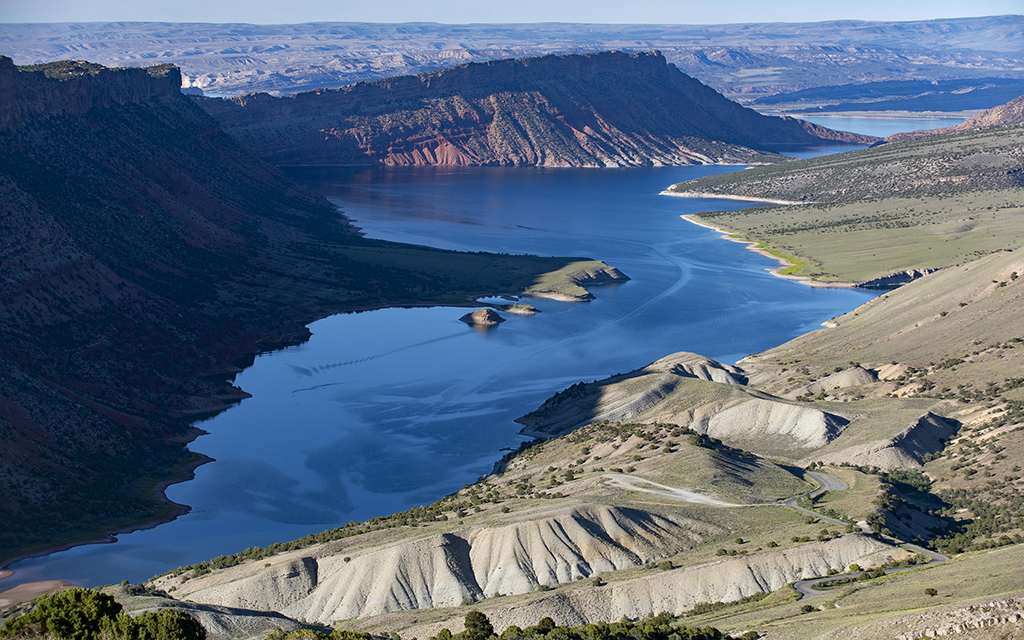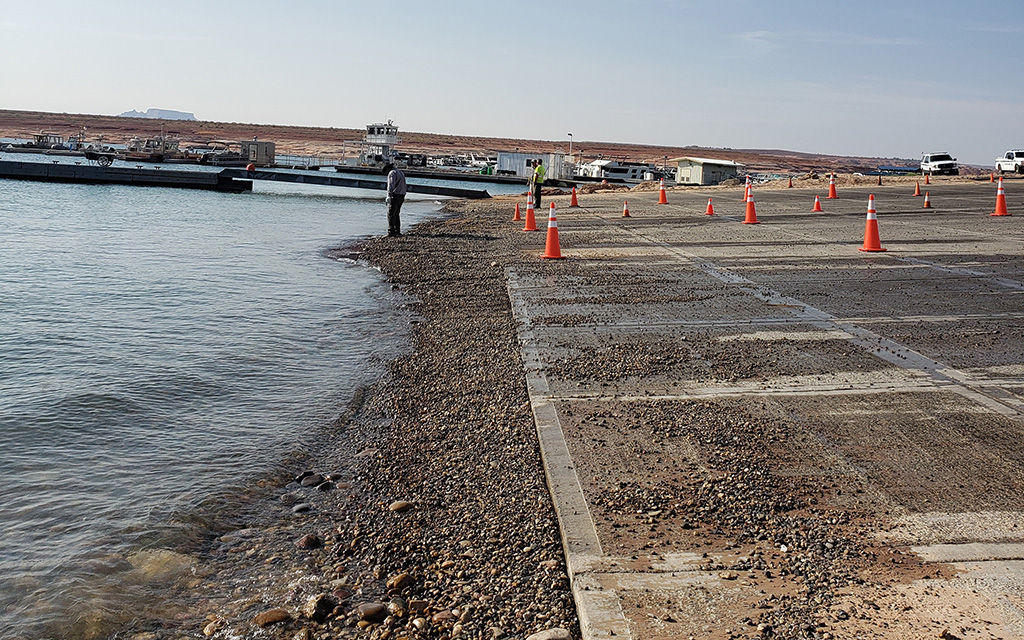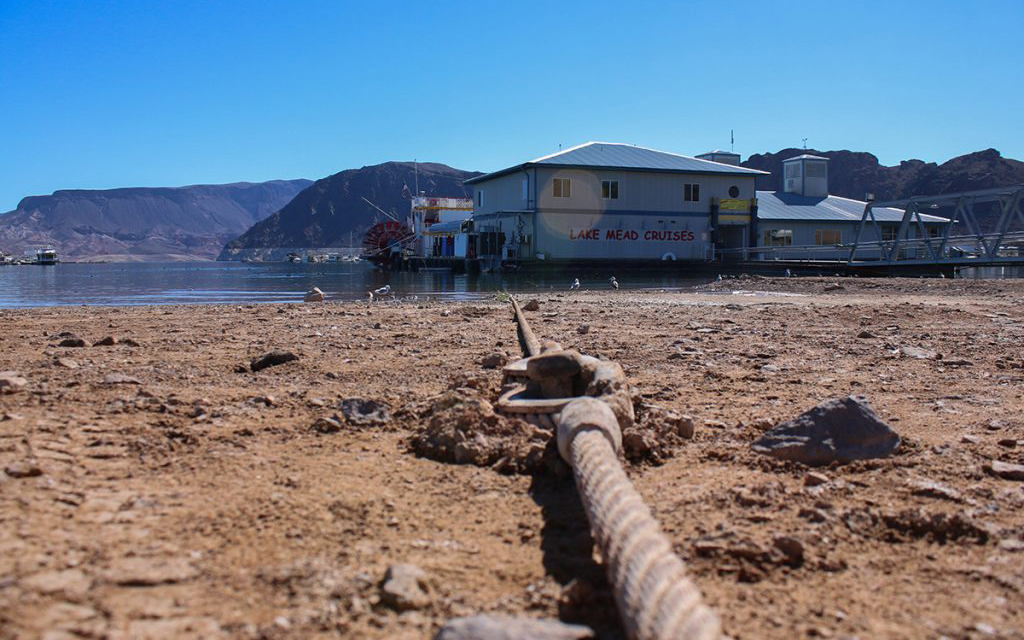Four states in the upper basin of the Colorado River have asked the federal government to pause water releases from the Flaming Gorge Reservoir that were aimed at propping up falling water levels downstream at Lake Powell.
Utah, Wyoming, Colorado and New Mexico, citing heavy winter precipitation, voted to suspend additional releases starting March 1, two months earlier than planned by the Bureau of Reclamation.
The bureau has used releases from Flaming Gorge to help prop up Lake Powell, where record low levels are threatening hydropower production inside the Glen Canyon Dam. Under the 2019 Drought Response Operations Agreement, those states outlined plans for water releases that would be triggered by falling levels in Lake Powell. The current schedule of releases was set to finish by the end of April.
But Utah’s top water negotiator, Gene Shawcroft, said the releases did their job and helped boost Lake Powell, and that this winter’s above-average snow totals will soon help refill the lake and decrease the need for water from Flaming Gorge. The reservoir, which straddles the Wyoming-Utah border, is the third largest in the Colorado River system, behind only Lake Mead and Lake Powell.
Suspending releases now “preserves all of our future options,” Shawcroft said.
“I expect Reclamation to consider that, and recognize that we still have options if we need to reinstate the releases,” he said. “But at this point, I think it’s fairly obvious that water left in Flaming Gorge makes more sense than to release it where we can never get it back.”
Discussions over how to share water between the seven states that use the Colorado River have grown increasingly tense in recent months. Demand is outstripping supply, as climate change shrinks the amount of water in the river.
The four Upper Basin states often claim they must adapt their water use each year in response to the ebb and flow of Mother Nature, while the Lower Basin states of California, Arizona and Nevada can rely on a legally obligated water delivery from the Upper Basin each year.
Pausing these extra releases from Flaming Gorge, Shawcroft said, helps to send a message.
“The Upper Division states and Reclamation should be the ones that determine how and when that water gets released so that we don’t simply have the Lower Basin believing that they can access Upper Division storage at whatever time they want,” he said.
Analysts called the Upper Basin vote a way to jockey for position in larger water sharing negotiations. The Bureau of Reclamation is in the process of drawing up a Supplemental Environmental Impact Statement – a document that could tweak the amount of water released from federally operated dams and reservoirs – and is considering state input on that plan.

Water from Flaming Gorge Reservoir has been used to help prop up Lake Powell, where historically-low water levels are threatening the ability to generate hydropower inside Glen Canyon Dam, shown here. (Photo by Alex Hager/KUNC)
In January, six states agreed on a plan to keep an additional 1.7 million acre-feet of water in Lake Mead, the nation’s largest reservoir. California released a counter proposal that would conserve less. Both fell short of a federal goal that called for conserving 2 million to 4 million acre-feet of water, but gave onlookers a clearer sense of states’ desires and willingness to sacrifice.
Kyle Roerink, executive director of Great Basin Water Network, an environmental group based in Nevada, said the Upper Basin’s request to pause releases from Flaming Gorge is another way to make its desires clear.
“Reclamation is hearing the saber-rattling and they’re going to have to demonstrate that they’re hearing both sides,” he said.
The harsh realities of climate change serve as a looming backdrop to all of this statecraft. Water availability has been shrinking because of a 23-year megadrought in which warmer temperatures have kept water away from the places where humans divert and collect it.
This winter has brought above-average precipitation to Colorado, Wyoming and Utah, where high-altitude snow melts to create the Colorado River. Climate scientists warn, however, that one strong winter will not be nearly enough to bring the river back to pre-megadrought levels.
The rules for divvying up the river are outlined in a century-old document that critics say cannot adequately meet the modern challenge posed by dwindling supplies. In response, the past few years have produced a patchwork of Band-Aid measures to stave off trouble at Lake Powell and Lake Mead, but have not substantively reworked water-sharing rules.
One major component of that patchwork, the Drought Contingency Plan, is set to expire in 2026, at which point states expect to come up with a more permanent rewrite of river-sharing guidelines.
Until then, Roerink said, Reclamation will remain caught in the middle of the standoff.
“When nobody wants to give an inch, how do you get a foot? When nobody wants to give a drop, how do you get an acre-foot?” he asked.
-This story is part of ongoing coverage of the Colorado River, produced by KUNC, and supported by the Walton Family Foundation.


